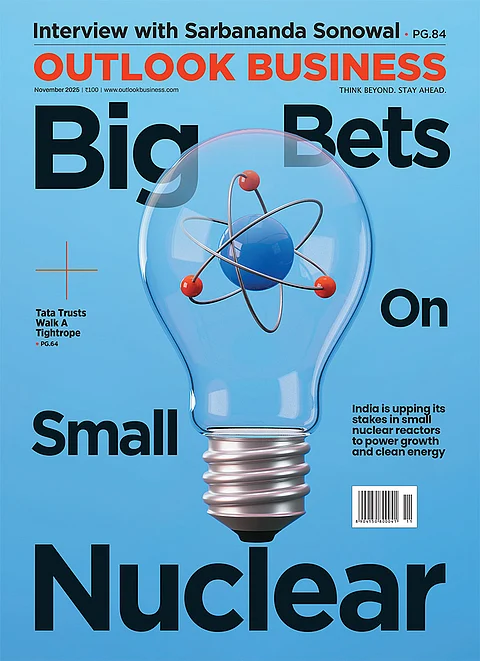
Targeted Incentives: Sahamati CEO B.G. Mahesh says fee waivers and faster loan approvals could drive Account Aggregator (AA) adoption to UPI-like scale.
Ecosystem Growth: Nearly 1,000 entities use AA, processing 30 crore consents and ₹17,000 crore in monthly loan disbursements.
Future Scope: Already DPDP-compliant, the AA framework could expand beyond finance into health, education, and telecom.
Account Aggregator (AA), which has the potential to emerge as a key piece of digital infrastructure in India’s financial sector, has reached a stage where targeted incentives will be essential for mass adoption, according to B.G. Mahesh, Chief Executive Officer of Sahamati.
He believes that, similar to UPI’s growth trajectory, measures such as processing fee waivers for AA-based loan applications or priority loan approvals such as a 24-hour decision window when data is shared through AA could significantly accelerate the adoption of this data-sharing framework, said B.G. Mahesh, Chief Executive Officer of Sahamati.
Sahamati is a non-profit industry alliance that facilitates and promotes the Account Aggregator (AA) ecosystem in India, coordinating between consumers, Financial Information Users (FIUs), Financial Information Providers (FIPs), and Account Aggregator platforms.
In an interview with Outlook Business, the CEO outlined the current development trajectory of the Account Aggregator framework and the reforms needed to further strengthen this innovation.
Do you have disaggregated data on AA adoption across urban and rural segments? Given that many rural borrowers still depend on NBFCs or informal credit channels, what trends are you seeing in AA-driven uptake outside major urban centres?
Not yet. At this stage, we only receive loan-level information primarily the number and value of loans from banks and NBFCs. Geographic granularity is not part of the dataset. We expect to incorporate location-linked reporting by 2026, which will substantially enhance our ability to analyse adoption patterns across urban and rural segments.
Industry sources say some banks and FIPs are still in “wait-and-watch” mode due to technical or regulatory frictions. What are the key bottlenecks holding back wider AA participation?
I would not fully agree with that characterisation. All 12 public sector banks already live on AA, along with the major private-sector lenders. Foreign banks are yet to come on board, but that is expected to take longer. Overall, nearly 10,000 regulated entities are ultimately eligible to participate, so the onboarding curve is naturally a multi-year process.
The early phase was deliberately focused on supply-side readiness ensuring the primary data fiduciaries were integrated before scaling use cases. Today, AMCs, depositories (NSDL and CDSL), pension CRAs, and most major institutions are live.
There were initial technical challenges, particularly around integrating legacy core banking systems, but data quality has improved significantly. If the data streams were still unreliable, we wouldn’t be seeing AA-enabled disbursements touch ₹17,000 crore per month.
Of course, India’s financial landscape is vast and heterogeneous. Informal lending remains deeply entrenched in some regions. Bringing those users into a digital, consent-driven data ecosystem will take time just as it took several years for UPI to reach mass adoption.
With the DPDP Act’s implementation expected soon, how are you ensuring that the AA consent artefact fully aligns with the Act’s statutory requirements for valid consent particularly around purpose limitation, notice, and user revocability?
AA has effectively been DPDP-compliant from day one even before the Act came into force. The consent artefact already mandates that FIUs (Financial Information Users) specify the purpose of data use, the revocability of consent, and the data-life period during which the information may be processed. These elements map closely to the core requirements laid out in the DPDP Act. Once the rules are notified, we will incorporate any necessary adjustments, but at this stage, we do not anticipate major changes.
UPI has demonstrated how quickly a public digital infrastructure can achieve mass adoption. For AA to scale in a similar way, do you think user-side incentives such as subsidies or fee waivers could play a meaningful role in accelerating uptake?
Yes. We have reached a point where incentive-linked use cases, in partnership with the government, can materially accelerate adoption. Several schemes already require frequent verification of bank statements such as PM SVANidhi or the Ministry of Rural Development’s skill-linked employment programmes. Today, this is done through PDFs or physical copies, which simply doesn’t scale. AA is a far more efficient mechanism for these workflows.
Similarly, for MSME lending, the government could incentivise digital adoption by offering reduced or waived processing fees for applications routed through AA. These targeted interventions can catalyse mass uptake. Earlier, the ecosystem wasn’t mature enough to support such measures but now it is.
Given India’s large young borrower base from housing to business and entrepreneurship and the complexity of the credit landscape, should AA or Sahamati have a more active role in financial literacy or advisory to help users navigate data-driven lending?
We already enable this through Personal Finance Management (PFM) apps that use AA data (with consent). They give users a 360-degree financial view; income, spending patterns, balances, assets, etc. It’s essentially a personal balance sheet, which most individuals otherwise cannot compile accurately. Users can download any AA app and any PFM app to experience this firsthand.
Do you see the AA model secure, consent-based data portability being extended beyond finance into domains like health, education, or telecom? If so, what would it take to enable such cross-sector expansion?
Technically, yes. The AA framework is fundamentally a secure, consent-based data-sharing rail, and the underlying architecture is capable of handling any category of digital data. However, the decision to allow non-financial data whether from health, education, telecom, or other domains to flow through AA rests entirely with the respective sectoral regulators and ministries. They must determine what data types are appropriate, what safeguards are required, and how sector-specific compliance obligations should be mapped onto the consent artefact.


























